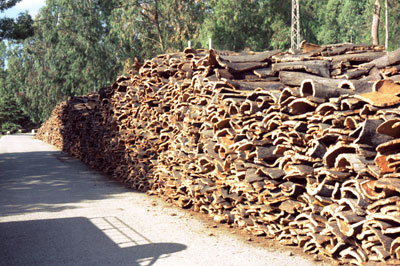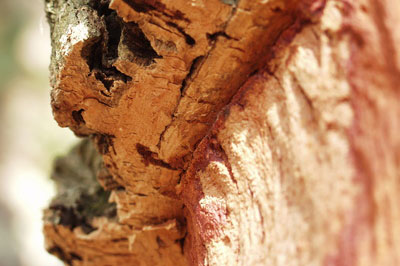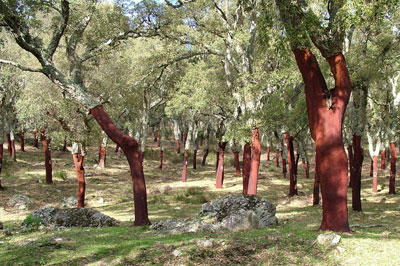Why cork?
- Cork is a renewable resource with very astonishing talents. Extremely lightweight, soft and flexible and therefore versatile
- When processed, cork is able to take various forms
- The use of cork is often a natural alternative to plastic
- Our raw cork usually descends from FSC-certified production. This means that during the peeling of the cork bark and the further processing, sustainability and responsible forest management are taken adequately into consideration.


Raw material cork
Cork has been harvested for more than 3.000 years in the Mediterranean region. During the summer months (end of July until August), cork gets hand-peeled from the cork oak.
The first harvest takes place after approximately 20 years, subsequently the harvest is repeated every seven to nine years. After approximately 60 to 80 years, it finally becomes attractive, since only then the bark has reached the thickness in order to produce wine corks. After the peeling, the bark stores another approximately six months for stabilization in the cork groves. This process is necessary for a better cork quality.
Characteristics of cork
Cork is an „airily“ material:
More than 90 % of the cork bark is air. The cork bark has a closed cellular structure. Every cork cell is a multi-polyhedron within a cell structure of approximately 30 to 40 million air cells per cm²!
Compression and provisions:
During the compression of the cork, the air within the cells is solidified. While doing so, the high flexibility of the cell membrane is very helpful. As soon as the pressure decreases, the cork cells go back into their original shape. The cell membranes do not lose any of their characteristics. These characteristics are of vital importance during hydraulic applications.
Interesting applications:
Antivibration, structural noise reduction, absorption of impact energy.
Cork DNA – the main component of cork bark:
Suberin (herbal biopolymers), polysaccharides (multiple sugar) and tannin (herbal tanning agent). Cork is resistant towards acids, oil, petrol and only rots very difficult in water and in soil. Suberin makes the cell membrane impermeable and airtight.

